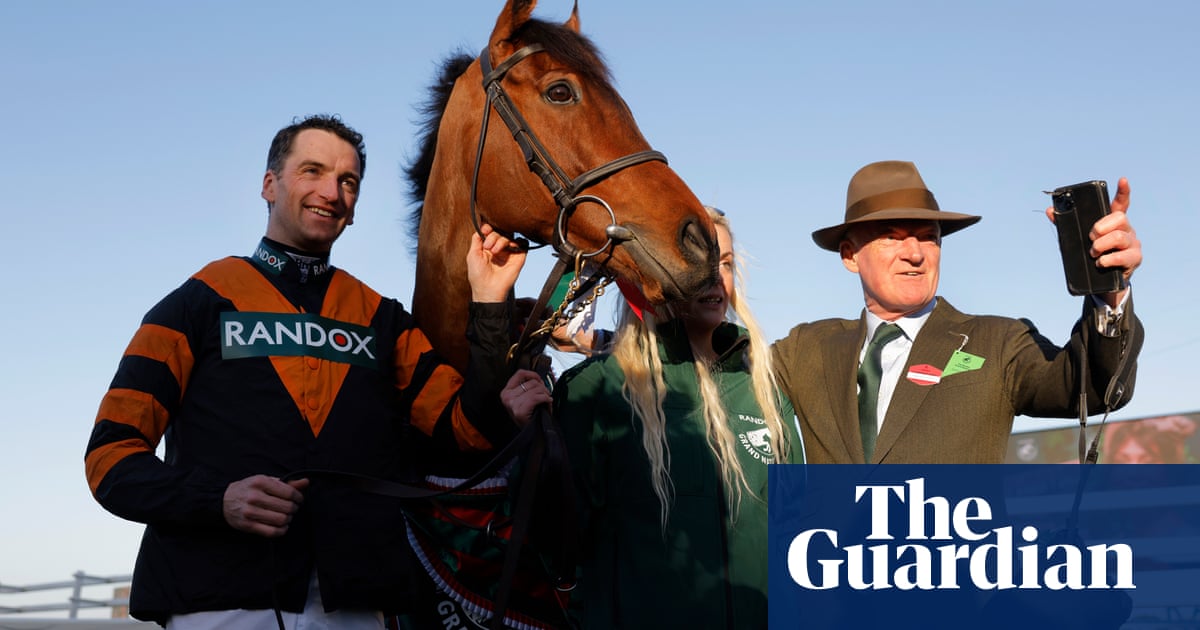Broadway Boy and Celebre D’Allen, the two horses that needed veterinary treatment on the track after running in the Grand National on Saturday, were both reported to be making good progress on Sunday after spending the night at Aintree racecourse.
Willy Twiston-Davies – assistant to his father, Nigel, the trainer of Broadway Boy – said the gelding would be back in the yard later in the day after taking a heavy fall at the 25th fence when leading the field on the second circuit.
“It sounds a lot more positive,” Twiston-Davies said.
“There’s going to be a couple of weeks of uncertainty for future racing but it looks a lot more positive than it did yesterday and the most important thing is our horse is coming home and should be OK.
“His welfare for the next few weeks is the most important thing and the vets at Aintree did a tremendous job and Laura Scrivener, who looked after him all night, was fantastic with him, and our boy’s coming home.”
Celebre D’Allen, a 125-1 chance, was pulled up after jumping the last fence and then collapsed on the course. Michael Nolan, his jockey, was banned for 10 days for continuing to ride after jumping the second-last fence when his chance had clearly gone.
Like Broadway Boy, Celebre D’Allen was able to walk into a horse ambulance after being treated by vets and Johnson White, co-trainer of the 13-year-old, said on Sunday that the gelding is “going the right way”.
White said: “I’ve seen videos of him this morning looking much brighter in himself and he’s been out for a pick of grass. The vets have seen him and he’s probably going to travel to a livery yard close to Aintree later today. It’s positive news and he’s going the right way.
“In the heat of the moment, I haven’t really spoken to the vets about what it really is, but it was probably a combination of the heat and everything. The main thing now is he’s back on the right track.”
The upbeat reports on both horses were a suitably positive postscript to a race that will inevitably, and rightly, be remembered as the Mullins National, after the father-and-son combination of Willie and Patrick got the win with Nick Rockett and their stable recording an unprecedented 1‑2‑3 and sending out five of the first seven home.
An outsider looking in might suggest that since the Mullins yard enjoys unparalleled dominance in jumping’s most important events in both Britain and Ireland, the result on Saturday was par for the course for a stable that houses a significant proportion of the best steeplechasers around.
after newsletter promotion
A 1-2-3 in the National, though, never mind five in the first seven, is a triumph on an entirely different level to most of Mullins’s achievements in the past. His half-dozen runners faced 28 opponents, in a handicap, and while all six had “WPM” stitched on their saddle-cloths, they had very different profiles heading into the race on Saturday.
Rockett took a fairly traditional route to Aintree via the Bobbyjo Chase at Fairyhouse in February. I Am Maximus, the runner-up, was the defending champion, attempting to become the first top-weight to win since 1974. Grangeclare West, who was third, had just the minimum of six chase starts required to run, Minella Cocooner (7th) was a big handicap winner who had gone off the boil while fifth-home Meetingofthewaters crept in at the bottom of the weights, more than a stone below his stable companions.
As it turned out, though, the other thing that they all had in common at 4pm on Saturday was that they had been prepared to the minute to run their best possible race, by a trainer whose pre-eminence among the greats of past and present is now beyond doubt.
The immediate impact of Mullins’s latest tour-de-force, meanwhile, is that having been the first Irish trainer to win the British jumps championship for 70 years in 2023-24, he is now poised to defend his title and will be sending lorry loads of horses to meetings up and down the country over the next three weeks.
Just as it did last year, a race that in the past has often been, in some respects, old news once the last horse is across the line has once again set up a compelling conclusion to the National Hunt campaign. Some still decry the changes to the fences and race conditions that have changed the nature of the race in recent years, but as an advertisement for jumps racing, and a starting point for potentially deeper engagement in the sport as a whole, the modern Grand National is so far proving to be just as effective, if not more so, than its previous incarnations.
